Traditionally southern culture - grapes are now grown even in the cold regions of Siberia and North-West Russia. In order to harvest, gardeners have to delve into all the intricacies of growing berries: top dressing, transplanting, pruningwintering. Usually, a grape is transplanted to a new place in the fall, when the plant goes into hibernation. Having correctly completed all the techniques of agricultural technology, after a couple of years mature delicious berries are picked from the bushes.
Content
- 1 Grape Transplant General Information
- 2 Why is transplant in autumn
- 3 Threats to grapes during transplanting
- 4 Varieties of grapes, the specifics of transplanting
- 5 Work in the fall: we specify the terms
- 6 Training
- 7 Planting dug grapes: methods
- 8 Take into account the age of the bush when transplanting
- 9 Caring for the bush after transplanting
- 10 Grape shelter
- 11 Transplant Secrets from Experienced Winegrowers
- 12 Conclusion
Grape Transplant General Information
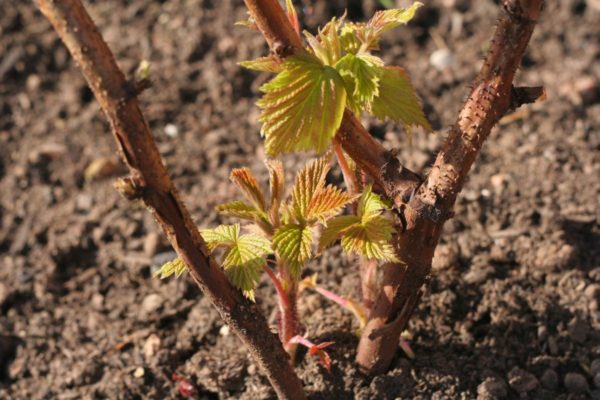
Why do grape replanting? The reasons are different:
- wrong place for a culture in the garden;
- redevelopment of the site;
- construction of an outbuilding;
- uncomfortable neighborhood (bushes or trees grow nearby that interfere with the grapes);
- the specificity of the variety is not taken into account when first landing (the bushes grew large, the area of nutrition for planting is insufficient).
When planning the procedure, agricultural technology and cultural features are taken into account. It is advisable to transplant grapes to another place in the fall, while the bushes are no more than 5-6 years old. Since they adapt faster in new conditions. The best time is spring or autumn, the period when the grape “sleeps” and is at rest.
A new site for planting is prepared in advance, making the necessary fertilizers, cultivating the soil. Before transplanting adult grapes, pruning of the aerial parts will be required, so the plants will more easily tolerate stress and better take root. After adaptation, inflorescences are removed from the bushes of the transplanted vineyard, not allowing to bear fruit for a couple of years. The bushes will gain strength, get stronger and after 2-3 years fruiting is allowed.
Why is transplant in autumn
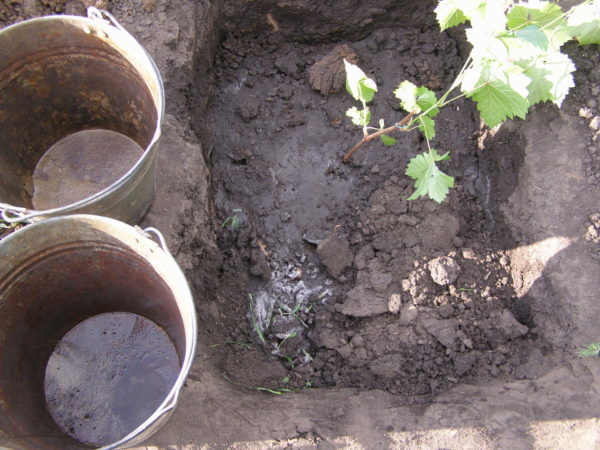
According to the rules of agricultural technology, transplanted culture in early spring or autumn. Experienced growers believe that it is better to transplant grape bushes in the fall, so they take root more quickly and get sick less. Be sure to take into account the weather and climate of the area.
What is the advantage of grape transplant in autumn:
- the plant goes into a period of "rest";
- autumn rains provide regular watering of bushes;
- After summer, the soil remains warm, so the root system does not experience much stress.
The transition to a state of sleep in grapes is gradual. The first, after the leaves fall, the aerial part departs to a state of rest, while the roots are still very active. Thanks to this, the bush manages to take root in a new place before the onset of cold weather.
The timing of transplantation of different grape varieties varies and depends on the region:
- in the southern regions - in late October or early November;
- in areas middle strip, at Moscow region - since mid-October;
- in the North-West, in the Urals - the beginning of October.
Take into account the weather forecast for the current season, terrain features. The main thing is that the transplanted bushes do not fall under early frosts.
Threats to grapes during transplanting
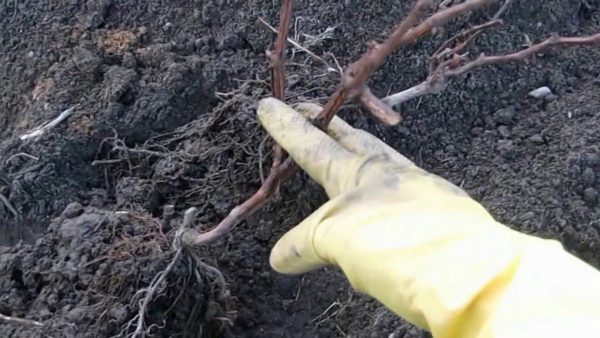
When planning to transplant grapes, do not forget about providing plants with full and proper care. Without following the rules, there are many risks of losing bushes, losing the variety and losing the crop.
Threats:
- within a couple of years, you will have to refuse to pick berries from transplanted vines;
- berries of a certain variety very often change their taste;
- transplanted plants are more often susceptible to infections (insidious phylloxera is especially dangerous).
It is not allowed to place the bush in the place of harvested plants, as this leads to diseases of the crop. There is a great risk of losing the plant when transplanting grapes over the age of 7-8 years, but with care and proper care, such instances survive.
Varieties of grapes, the specifics of transplanting
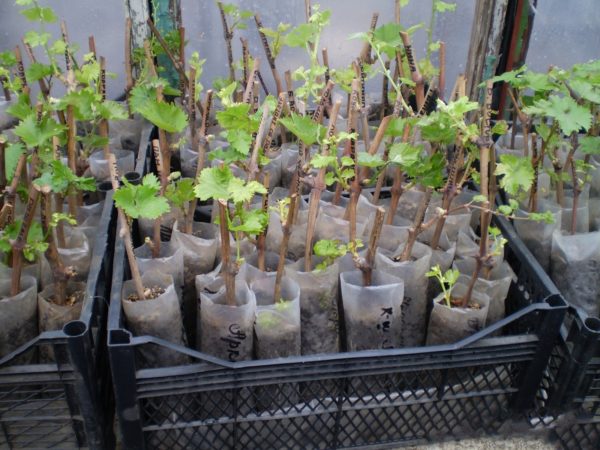
Several varieties of grapes are grown in the middle lane and in the northern regions:
- table (for picking berries);
- maiden;
- wild (for registration of sites).
The last two species are unpretentious, not requiring special care and growing in any culture conditions. Creepers instantly grow, wrapping around supports, it is no coincidence that they are so fond of using them in landscape design. They easily transfer transplants, quickly take root in a new place and grow wildly.
Varieties of wine and table grapes will require special care, including during transplantation. Violation of agricultural technology often leads to the death of valuable crop varieties of culture.
Work in the fall: we specify the terms
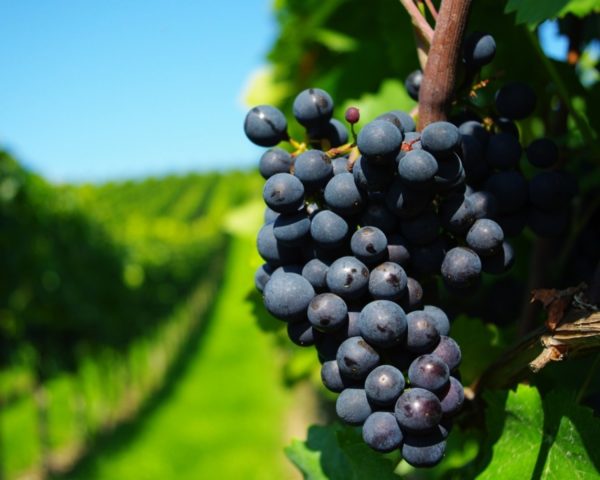
The exact dates for grapes are difficult to indicate, since various factors are taken into account:
- variety;
- condition of bushes;
- the age of the vines;
- climatic conditions of the area;
- weather.
One of the main conditions is the complete fall of the leaves, showing that the plant is approaching a state of "rest", but the root system is still strong.
In what month
Leaf fall from bushes on vineyards begins in September-October. The soil at this time is warm, the roots are fully functioning. This is an appropriate time for transplantation, but taking into account long-term weather forecasts.
You can not stay with the work, but do not rush, otherwise the planted bushes in warm autumn will quickly grow and begin to gain color. With the late onset of autumn, the deadlines are mid-November, no later.
In outskirts of Moscow
The usual time for replanting grape bushes in the middle lane is October. Depending on the particular year, the period may be a little earlier - the end of September or a little later - the end of October. You can not wait for the cooling of the soil, because of the cold weather the bushes do not take root well.
In the Urals
In the Urals, as well as in the Northwest, bushes are replanted in the first month of autumn. In September, deciduous fall occurs in these regions, the weather changes rapidly and a series of warm days instantly gives way to cold and dank damp. In order to avoid stress and death of grapes, the transplant is not postponed, choosing a clear, fine day for work.
In Siberia
Is it possible to transplant after harvesting in Siberia? Autumn transplanting works are not suitable for this region, too early here comes not even autumn, but winter. Global warming, of course, is affecting, but Siberia nevertheless confirms the glory of the land of cold and frost. Therefore, it is better to prepare pits for bushes in the fall, and to plan all the work in the spring.
Training
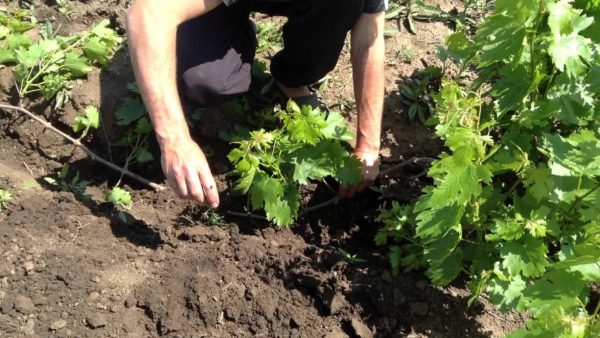
First of all, choose a place: well-lit by the sun, without drafts. It is recommended to plant seedlings near walls, hedges that cover plantings from the winds.
The southern and southwestern slopes are suitable, while the rows are oriented in the direction from south to north. Observe the distance between the pits, otherwise thickening of plantings, interweaving of vines cannot be avoided.
Cooking a bush of grapes
The vines are pruned, leaving branches no higher than 18-20 cm.Slices are treated with var for horticultural work, then proceed to dig the bush. It is important to preserve the integrity of the underground boles, roots and heel of bushes.
For better survival, the roots of the dug up bushes are immersed in a special talker (two shovels of mullein, a clay shovel are mixed in water to a creamy consistency).
Pit preparation
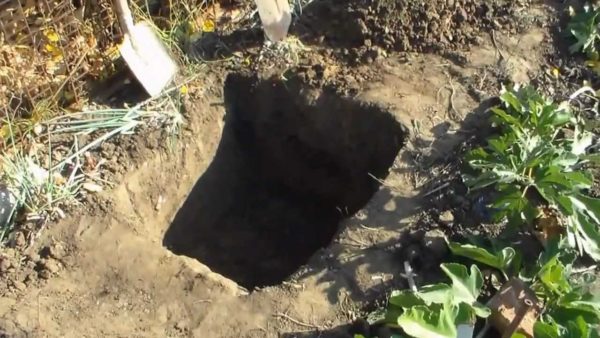
Well-prepared soil is the key to the rapid adaptation of vineyards in a new place, eliminating the appearance of diseases. Soil begins to be prepared 3-4 weeks before the proposed work. After digging the pits, they are left to settle the soil, then fertilizers mixed with the ground are applied.
Nutrient mixture:
- chernozem (4-6 kg);
- superphosphate (250 grams);
- wood ash or potassium salt (150 grams each).
The components are mixed, half fall asleep to the bottom of the pit. After planting, the roots are sprinkled with the remains of the mixture, soil and slightly tamped.
Planting dug grapes: methods
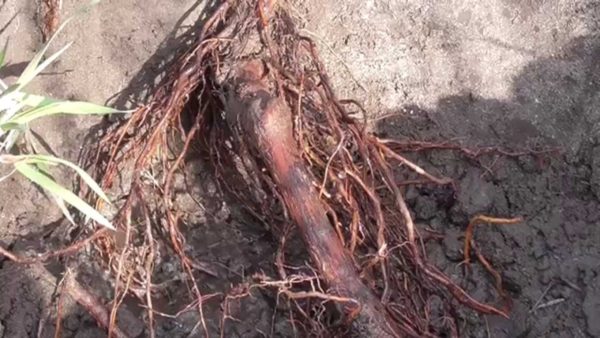
Transplant bushes, as well as layering, seedlings or cuttings different ways. Take into account:
- the age of the grapes (old bushes are more difficult to tolerate the procedure, often get sick);
- plant condition;
- conditions.
In some cases, it is better to transplant the bushes with a lump of earth, in others it is necessary to work hard and take care of the crop, transferred to a new place with bare roots.
Transplant with a lump of land
For young plants, transplant with a lump of land. The "pluses" are obvious:
- the roots are in their usual environment;
- eliminates the risk of damage to the root system.
About 3-4 days before the planned work stop watering the grapes. A pit is prepared taking into account the fact that it should fit the entire lump of land with roots.
Stages:
- The vine is cut, leaving no more than two sleeves.
- Gently dig a bush from all sides.
- Raise the plant, having previously cut the lowest roots.
- Move the bush to a new place.
- Place the bush in the pit, carefully spreading the roots.
- They fill up the pit with soil and a nutrient mixture, watered abundantly with 2-3 buckets of water.
Grapes with Bare Roots
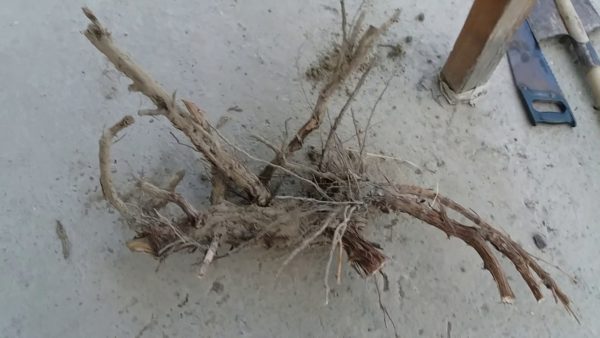
The method of replanting plants with a bare root system is slightly different.
Stages:
- Cut the bush, leaving 3-4 sleeves.
- Leave two shoots and three eyes, the rest is cut off on the sleeves completely.
- Dig a bush.
- They remove the earth from the roots, cut off the lower roots.
- Install the bush in the prepared hole (in terms of level - lower by 18-20 cm of the previous one).
- They add soil, water the planting.
Usually, when transplanted with bare roots, the plant begins to produce berries after two years.
Take into account the age of the bush when transplanting
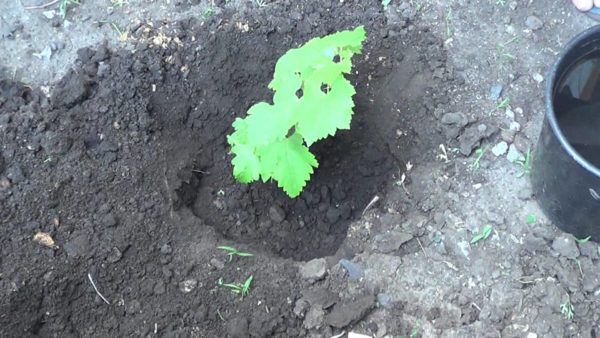
Experts recommend transplanting grape bushes until their age has exceeded 7-8 years. But for various reasons, winegrowers can not always withstand such rules, replanting bushes at any age.
We must be prepared for the fact that the old bushes will require more attention and care. There is a lot of trouble with them, and the procedure does not always end successfully. This is due to the powerful root system of the plant, which is more difficult to take root in a new place.
Despite the differences in age, the approximate scheme of work is the same for young bushes, and for the grape "veteran".
Moving two year old grapes
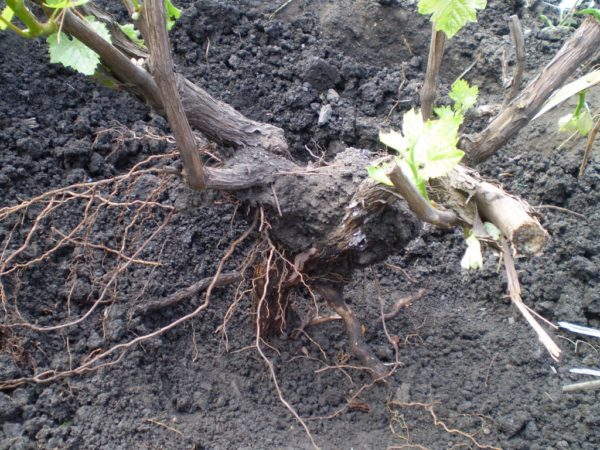
Transplanted bushes of the “two-year-old”, subject to the rules of agricultural technology, take root easily. What to consider:
- when digging, they retreat from plants by about 30-40 cm, so as not to damage the root system;
- deepen the shovel to a depth of half a meter;
- after transplantation, the vine is cut to three buds.
It is advisable to carry seedlings with a lump of earth.
Transplant of three year old grapes
At a bush three years old, the roots penetrate to a depth of 80-100 cm, but the main part lies on the horizon up to half a meter. In width, the root system reaches a radius of 100-120 cm, and this must be taken into account when digging.
The shovel is deepened to 80 cm, retreating from the base of the plant to 50-60 cm. Pruning of the vine is mandatory, according to the standard - up to 3-4 eyes.
Old grapes: what to consider
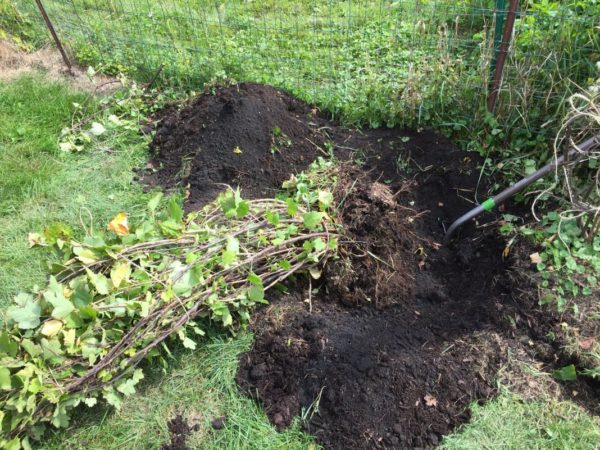 Planting old grapes require special attention. The underground part of the plant is located mainly at a depth of 50-60 cm, although the longest roots go into the ground up to 150-200 cm. Therefore, when transplanting, it is difficult to avoid deformation of the roots, which complicates the adaptation of the bushes.
Planting old grapes require special attention. The underground part of the plant is located mainly at a depth of 50-60 cm, although the longest roots go into the ground up to 150-200 cm. Therefore, when transplanting, it is difficult to avoid deformation of the roots, which complicates the adaptation of the bushes.
Experienced growers, if necessary, change the planting site of old grapes prefer to transfer the bush using layering. But this method is only good if the distance between the old and the new place does not exceed 2.5 meters.
The selected layers are bent to the side, in the right place they are sprinkled with earth for rooting. After a while, it takes root, but grows, receiving nutrition from an adult bush. A new bush is completely separated after 2 years, having entered into force and not requiring maternal nutrition.
If you decide to transplant a powerful adult bush completely, you will have to try to dig up the roots with a lump of earth, preserving as much of the volume of the underground part of the plant as possible. It is allowed to remove dark, non-viable parts of the roots, leaving only working, light roots.
Caring for the bush after transplanting
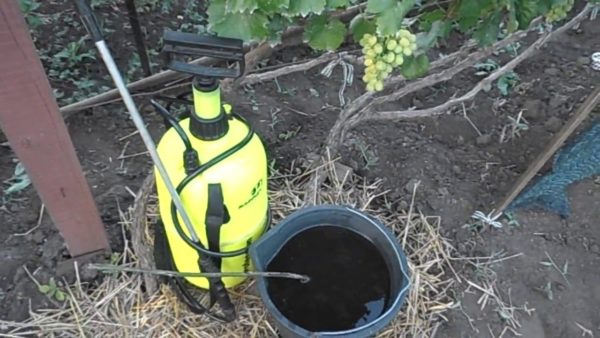
After moving the culture to a new place, it is required to provide the plants with full care. There are not many events:
- watering (until the vines shelter for the winter) about once a week;
- mulching the soil around (sawdust, humus).
Provided that fertilizers were introduced into the planting pit, it is not necessary to feed grapes after transplanting. But gardeners who need to “start” planting in development as quickly as possible use the method of top dressing through the pipe.
- In the landing pit at the bottom, drainage is made of pebbles, pebbles or broken bricks.
- Install a pipe (plastic, asbestos) with a diameter of up to 10 cm in a pit.
- The pipe should abut against the drainage layer with the lower end and peek out from the soil with the upper.
- After planting a bush through a pipe feed grapes nutritional compounds.
It is convenient to water the plantings through the pipe. The next year, all inflorescences are removed from the grapes, after two years the procedure is repeated. This is done to strengthen the grapes, the best adaptation of the bushes.
Grape shelter
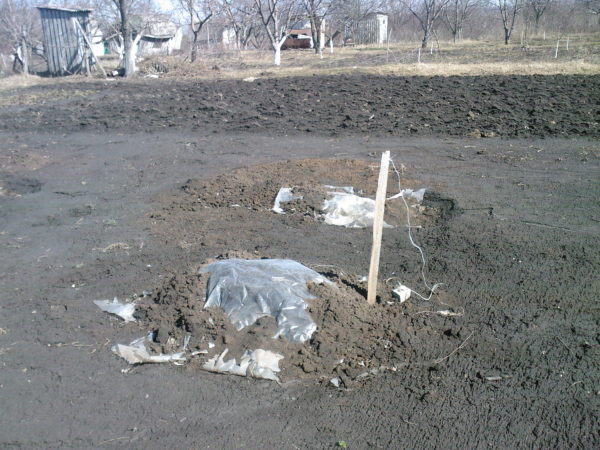
In the middle lane, transplanted grapes must be covered for the winter. Agrofibre is best suited for this, saving plantings from severe frosts and freezing.
The bushes are wrapped with fabric, over the landings they make a frame of arches, also cover it with non-woven material. In regions with severe winters, the soil is additionally mulched.
Transplant Secrets from Experienced Winegrowers
Gardeners with experience have accumulated a lot of "secrets" in the agricultural technology of grapes, including transplanting crops. Useful recommendations of the “experienced” will help to avoid mistakes, to minimize the risk of death of bushes.
- The grapes are transplanted into previously prepared soil: fertilized, cleared of weeds. Do not plant grapes in places where culture has already grown. Otherwise, new plantings are threatened by infections, dangerous pests.
- As mulch, ash, humus is used, but in no case do not trim the vines and dry grape leaves.
- Do not dig huge pits for adult bushes. The place should be enough, but no frills, an area of 1-1.2 square meters. meter is enough.
- When transferring bushes, it is desirable to preserve the entire volume of the root system. But if there are dark, thin, lifeless roots, it is better to cut them off. For disinfection and faster healing, the roots are dipped in a special clay mash.
- In the absence of an earthen coma, the transplant is carried out in a short time so that the plant does not have time to wither.
Conclusion
Faced with the need to transplant plants to a new place in the fall, novice gardeners should not panic. Knowing how to transplant grapes correctly in the fall and following the recommendations on crop farming techniques, you can save the bushes and get the crop again in the very near future.




 Non-covering winter-hardy grape varieties for Moscow region
Non-covering winter-hardy grape varieties for Moscow region How to keep the vine in winter
How to keep the vine in winter When can I transfer grapes to another place in the fall
When can I transfer grapes to another place in the fall How to cover and prepare grapes for the winter in the suburbs
How to cover and prepare grapes for the winter in the suburbs